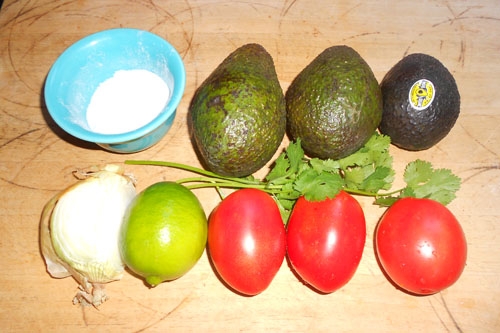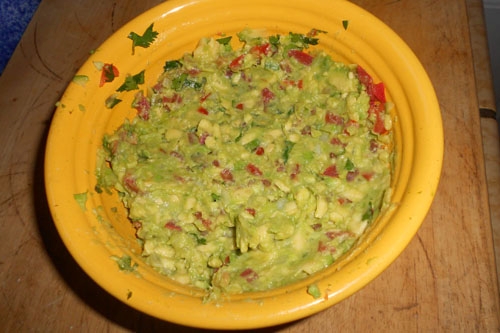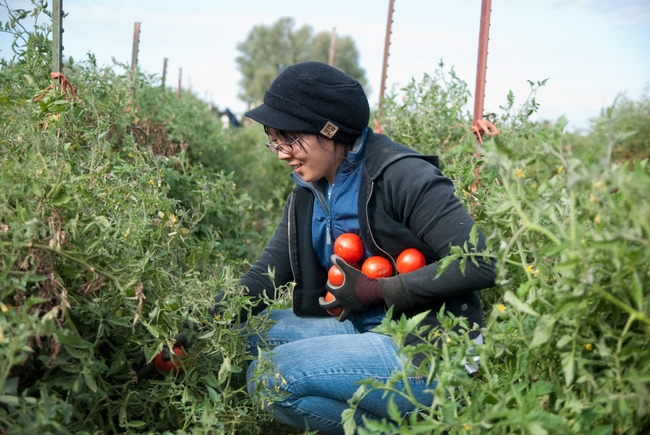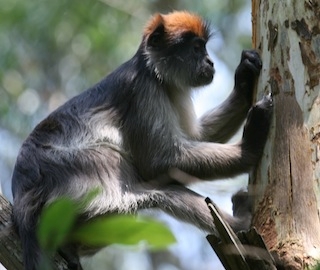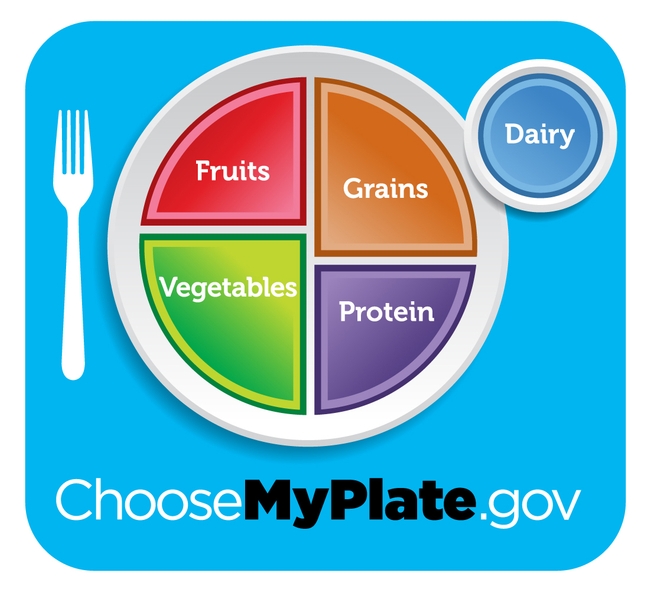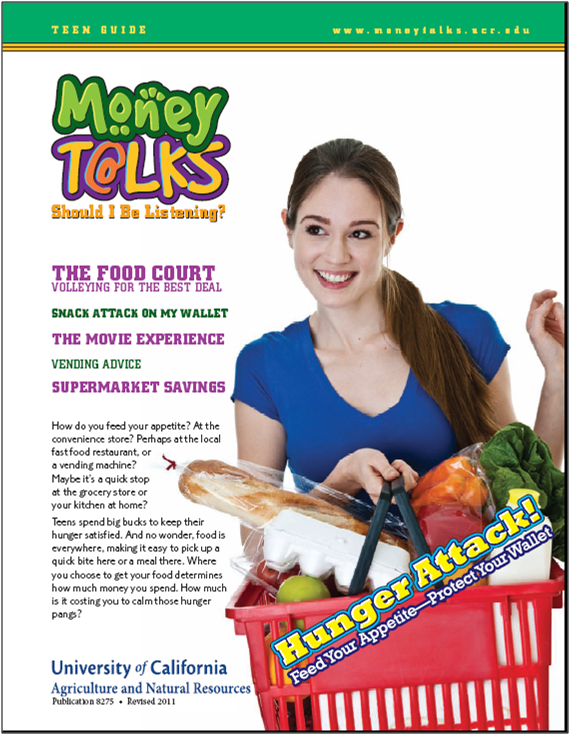UC Food Blog
Adding variety: avocados and guacamole
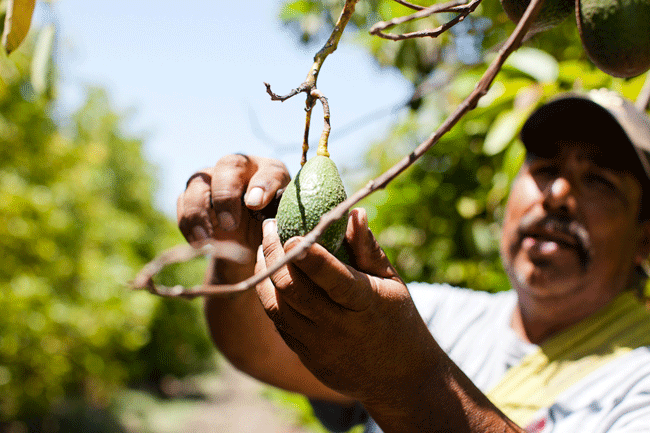
I have limited cooking skills, so I’m lucky that my wife is a great cook and an even better baker – lemon bars, anyone?
But there’s one dish she prefers that I prepare: guacamole. I was thinking about this when I was reviewing our recent photo shoot at UC ANR’s South Coast Research and Extension Center in Irvine, which included images of strawberries, citrus and avocados.
“Our whole goal is to make the industry in California more sustainable,” said UC Cooperative Extension specialist Mary Lu Arpaia, in the Department of Botany and Plant Sciences at UC Riverside.
Arpaia leads UC’s efforts to develop new avocado varieties. The dominant variety, Hass, started in 1926 in Southern California and has become so common globally that it could become generic, Arpaia said.
“My belief is the way we’re going to differentiate ourselves as a California industry and survive is by breeding something unique,” Arpaia said.
UC Riverside has developed several avocado varieties, signing a license agreement last year for its latest release, GEM. The great-granddaughter of the Hass avocado, GEM shares Hass’ desired characteristics such as a creamy, nutty flesh while offering growers additional benefits such as being a smaller tree that typically is more productive, Arpaia said.
Arpaia is evaluating more varieties. The next potential release is likely two to three years away, she said.
Meanwhile, Arpaia also is collaborating with the U.S. Department of Agriculture to improve the postharvest quality of avocados – how packing houses and distribution centers should handle the fruit, for how long and at what temperature.
“People definitely like fruit that is creamy, smooth, nutty and buttery. They like fruit that has a pleasant aftertaste,” said Arpaia, who conducts monthly avocado tasting panels at UC Riverside.
Packed with nearly 20 nutrients including potassium, avocados are an appetizing addition to salads and sandwiches. Arpaia likes them sliced, eaten alone, in a salad or on a warm corn tortilla. Some like them sweet in cheesecake or milkshakes. Of course, they’re best known as the base ingredient in guacamole.
I keep my guacamole simple: avocados (three), white onion (one-third), Roma tomatoes (three), lime (one), cilantro and salt. I start by scooping out the avocado pulp, slicing it into medium chunks and putting it in a bowl, mixing in lime juice. Then I dice the onion and tomatoes (seeded) into fine pieces and toss them in the bowl, followed by chopped cilantro. Next, I mash it up with a spoon, sprinkling on some salt and more lime juice. Test it and then serve.
For a spicier version, add garlic, jalapeños or serranos. The possibilities are plentiful. Just make sure you start with ripe avocados. What’s your favorite guacamole recipe?
Students play key role in building community around sustainable food systems
On an unusually cool July morning at the UC Davis Student Farm, students are harvesting tomatoes and other produce for the farm’s Community Supported Agriculture (CSA) membership program. The CSA baskets are pre-sold to members of the campus community and are among the ways students participate in the campus food system.
“It’s more than a way to sell food. It builds community, and that’s a powerful thing for students to learn,” said Raoul Adamchak, who coordinates the CSA and the Market Garden where the produce is grown.
Over the years, those involved in UC campuses’ food systems have garnered powerful lessons from students as well, resulting in organic gardens, student farms and increasingly sustainable food options at dining halls. These student-initiated components of campus food systems continue to nurture student opportunities to learn and get involved.
While the Student Farm has run its CSA for 16 years, the farm has been a part of the campus food system for 30 years by selling fresh organic produce to the UC Davis Coffee House, which is run by Associated Students, UC Davis. Most recently, it began selling produce to Sodexo-run UC Davis Dining Services – further diversifying its customer base.
“When Dining Services initially wanted to buy from us, we were hesitant,” said Mark Van Horn, director of the Student Farm. “Our CSA was well established and is still our highest grossing market. We’re at the upper limits of production and didn’t think we could grow more without negatively effecting education – the primary purpose of the farm. What changed our minds is that we realized our relationship with them is about education as well as production. We’re collaborating with Dining Services to educate students – more students than ever – about the entire food system.”
Dining Services also serves a key audience – incoming undergraduates and potential interns for the Student Farm, Russell Ranch at UC Davis and other programs that contribute to the campus food system.
“We’re trying to engage students in the food system so they can learn about where their food comes from and what’s in it,” said Dani Lee, UC Davis University Dining Services’ sustainability manager.
Dining Services labels the origin of campus-produced food. It regularly hosts outreach events, features displays about and organizes tours of the Student Farm, Russell Ranch and other campus-based partners. It has also established internships for students interested in waste reduction, gardening and sourcing food more locally.
Lee and Van Horn hope these efforts will help inspire students to learn more.
“We’re seeing more interest from students today than ever before,” Van Horn said. “I attribute it to a bigger cultural awakening catalyzed by folks like Michael Pollan and Eric Schlosser. They figured out that if you talk about agriculture, the environment and the whole food system just as ‘food,’ it’s more interesting. Students are coming in with more knowledge and commitment to these issues than ever before. Encouraging them to get actively involved in the food system is a great way to nurture what students years ago began when they founded the Student Farm, started the Coffee House, and got University of California administrators to commit to meeting a list of sustainability criteria by 2020.”
UC Davis Dining Services already exceeds the UC goal of 20 percent sustainably produced food by 2020, but it isn’t stopping there.
“We’re constantly working on sourcing more products locally,” Lee said.
Lauren Cockrell, a fourth-year UC Davis student majoring in Sustainable Agriculture and Food Systems is pleased with the trajectory and believes ensuring student involvement in the effort to build a more sustainable food system is key.
“I’d like the next step to be an independent, entirely student-run food retail business that, at its core, values sustainability,” she said.
Looking to Darwin to understand soy
Soy is now everywhere in the American diet. Tofu has become a more mainstream ingredient, soy milk crowds dairy cases, and soy fillers and additives can be found in processed foods from soups to meat and vegi-burgers to flavorings like cheese powders. The ubiquitous bean’s high levels of estrogen-mimicking compounds, called phytoestrogens, have long been a topic of scientific study and the nation’s ongoing conversation about nutrition and health. Does eating soy impact our sexual development? Harm women’s reproductive health? Minimize the symptoms of menopause? In a confusing matrix of news reports over the past decade, it’s been reported to both encourage some cancers and protect against others.
“Despite great interest in the effects of phytoestrogens on humans and livestock, very little is known about how often estrogenic plants are consumed by our closest-living relatives, so I decided to begin screening the important plant foods of various wild primate species for estrogenic activity,” said Michael Wasserman, a postdoctoral scholar in the Department of Anthropology at McGill University and lead author of the study, who conducted the research while completing his Ph.D. in UC Berkeley’s Department of Environmental Science, Policy, and Management.
Working in lab of Dale Leitman, an adjunct professor in UC Berkeley’s Department of Nutritional Sciences and Toxicology, Wasserman measured the presence of phytoestrogens in the diets of two leaf-eating primate species from Uganda and found that both species routinely consumed estrogenic plants as part of the staple foods in their diets. The red colobus monkey of Kibale National Park consumed more than 10 percent of its diet in estrogenic plants, and in mountain gorilla of Bwindi Impenetrable National Park, studied by his co-author Jessica Rothman, an assistant professor of primate ecology at Hunter College, estrogenic plants comprised nearly 9 percent of the animals’ total diet.
Wasserman is now looking into how these plants affect the red colobus’s endocrine system, which, like ours, regulates many physiological processes and behaviors. He is also measuring the presence of phytoestrogens in the diets of fruit-eating primates, like the chimpanzee, which should yield more information about the relationship between these animals and plants.
As his findings grow, Wasserman hopes the research will shed light on how long humans have been eating estrogenic plant foods over our evolutionary history.
“Throughout most of human history we have lived as hunter-gatherers, consuming large amounts of wild plant foods, especially fruits, and our biology has changed little since these pre-agricultural times,” he said.
By studying chimpanzees, gorillas, and other wild primates that also depend on wild plant foods to meet their nutritional needs, Wasserman hopes to help clarify the importance of dietary niche (fruit- vs. leaf-eater) and phylogeny (ape vs. monkey) to phytoestrogen exposure.
“If it is only the leaf-eaters consuming these plants, then eating foods like soy may be a relatively new trend for us," Wasserman said. "If fruit-eating apes consume estrogenic plants, we have probably been consuming phytoestrogens for millions of years.”
The study is published in the May issue of the American Journal of Physical Anthropology.
Could you please pass me the bug kabobs?
Possibly, people could be divided into the following two groups: those who knowingly eat insects, and those who think they have never eaten them. Since I am still assailed by the odd nightmare in which I am bringing to my lips a well-cooked bug that suddenly springs to life, I decided to tackle my bug-food phobia by visiting entomologist Douglas Yanega of UC Riverside last week.
Yanega has eaten insects, even relished them. With no difficulty whatsoever he has ingested honey bees, termites, mealworms, crickets, grasshoppers, ants, June beetles, silkworms and even scorpions.
Eating insects is not unusual in Thailand, Yanega explained. Insects, a good source of highly digestible protein, are part of the diet in Korea, China and Mexico as well.
“You get more bang for the buck when you eat insects, where protein is concerned,” Yanega said. “True, the outer hardened shell is often not digestible, but the softer, internal tissues are. Of course, you want to avoid toxic insects. There are some that could kill you if you ate them.”
How does one know if an insect is toxic? In general, herbivorous insects tend to be more edible. Moreover, insects have evolved to alert other critters — and us! — that they are not suitable for consumption. Bright colors like red, orange or yellow juxtaposed with black on insect bodies are a sure warning from insects that you’d better stay away.
Because few people experiment with eating insects, identifying those that are both edible and delicious can be a big challenge.
“You have, in the middle of the bell curve of insects, a whole lot that are edible but taste awful,” Yanega said. “And there are those at one end of the curve that are just toxic. But at the other end of this curve lie the prized ones: these are edible and tasty.”
In the United States, most people are culturally still averse to eating insects. If you travel to Mexico, however, you might eat stinkbugs, sometimes used to flavor food. Farther off, in Japan, you could enjoy wasp grubs and silkworm larvae. In the mainland parts of Southeast Asia, you can savor giant water bugs and mole crickets.
According to Yanega, one way to get introduced to an entomological diet is to first dry out insects, and then grind them up to a powder.
“You can use this powder as a supplement,” he said. “It’s the easiest way to go about eating insects as food. You can mix the powder into, say, wheat flour to get 'insect-enriched flour.'
If you’re cringing, rest assured that most of us already eat insects unknowingly. Much of food coloring uses insects. The waxy coloring that coats candies is oftentimes insect-based. And a lot of fresh produce has a built-in level of “insect contamination.”
“As long as you are not allergic to an edible insect, you’re safe eating it,” Yanega said. “If you can get past your phobia or stigma of putting bugs in your mouth, you should have no difficulty in adding insects to your diet.”
Which is what most of us would have to do if we found ourselves stranded on an island and famished.
“Should that happen, never mind the brightly colored bugs,” Yanega said. “Instead, go after the ones that are cryptically colored, the ones that look as though they are hiding from something. They would be a much better bet.”
MyPlate revealed: One year later
One year ago in June, the USDA unveiled the new food icon, MyPlate. Based on the 2010 Dietary Guidelines for Americans, MyPlate was created to remind us to make healthy choices at mealtime and to visit the website to get more information. This new, improved and simplified version of MyPyramid was an exciting development for dietitians like myself. No longer would we have to explain to the public what those abstract yet colorful bands represented on MyPyramid. The plate is simple and and gets right to the point, and is a great teaching tool in my opinion.
The beauty of MyPlate is that the graphic is simple, but the website is incredibly rich in information for the public and professionals alike. My favorite feature on the website is the SuperTracker, where you can get a personalized nutrition and physical activity plan. SuperTracker can become your virtual nutrition coach, urging you to meet your health goals through weekly emails.
There is also a great series of handouts called Ten Tips Nutrition Education Series. These free downloadable handouts are created in English and Spanish to help consumers get started toward a healthy diet. There are 20 different topics available now, and even more to come later.
In June, my colleague and I had the pleasure of presenting MyPlate resources and activities to home economics teachers attending a conference in Garden Grove, Calif. We encouraged the teachers to connect with their local UC Cooperative Extension office where the nutrition education professionals have developed creative MyPlate activities to supplement existing nutrition education curricula.
I also knew the home economics teachers would be interested in Hunger Attack. Hunger Attack is part of the MoneyTalks for Teens financial literacy education series developed by UC Cooperative Extension's Consumer Economics specialist and advisors. This resource is designed to teach teens how to make healthier choices and to save money when shopping for food, and has been updated with the MyPlate icon. This resource is made available to educators by visiting the MoneyTalks for Teens website and requesting a password, or contacting the local UC CalFresh Nutrition Education Program or Expanded Food & Nutrition Education (EFNEP) program, both operated by UC Cooperative Extension.
Here's to a successful first year with MyPlate and a job-well-done to the educators and nutrition professionals who have worked so hard to extend these valuable resources to our schools and communities!



